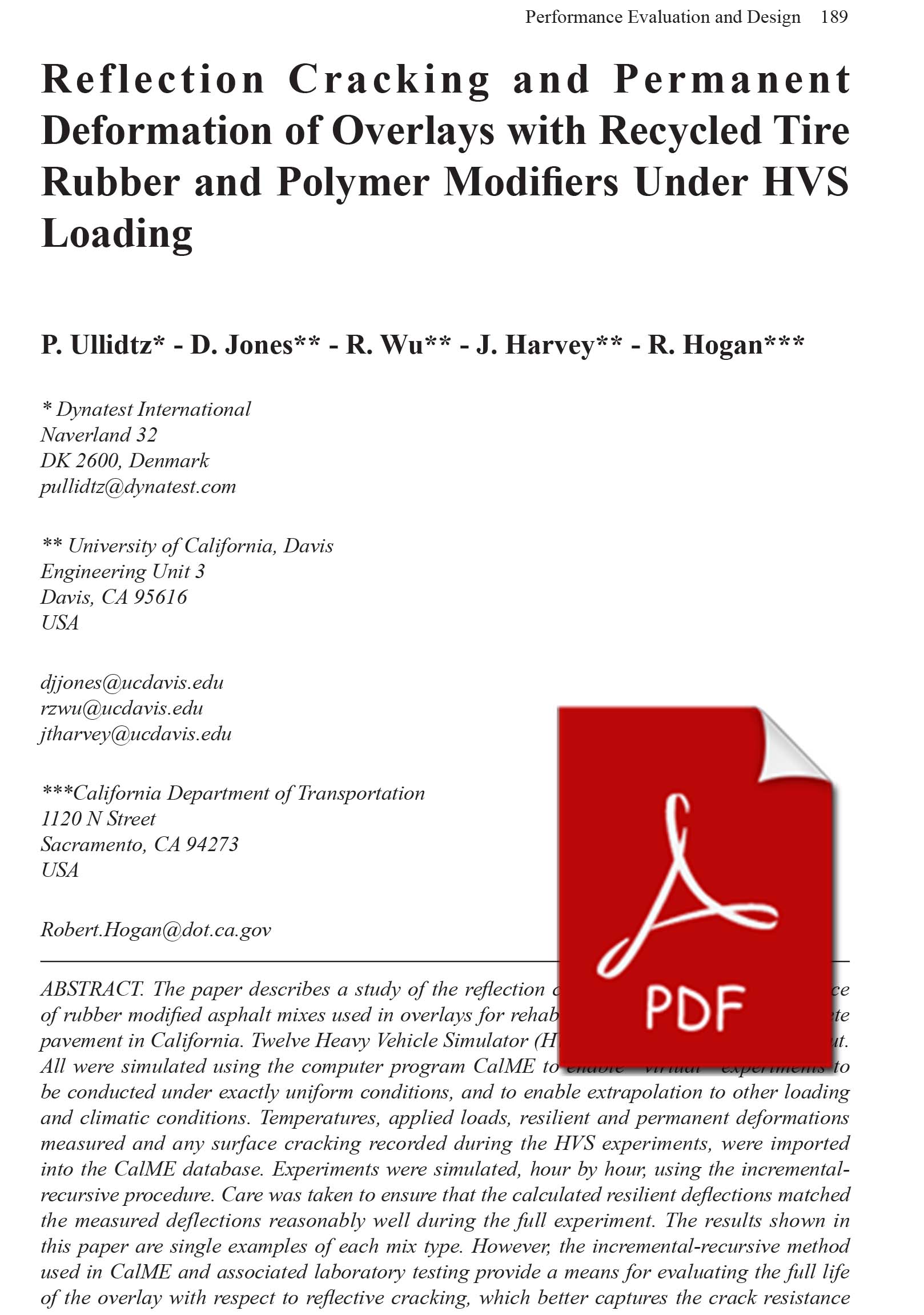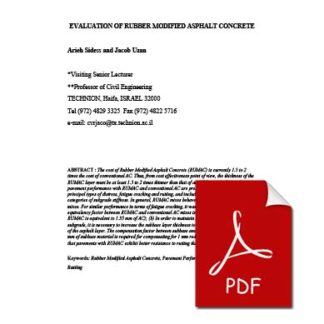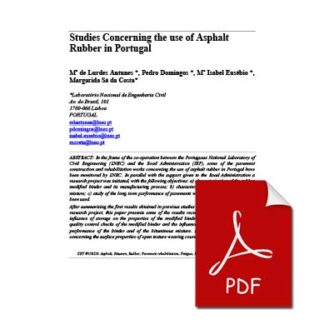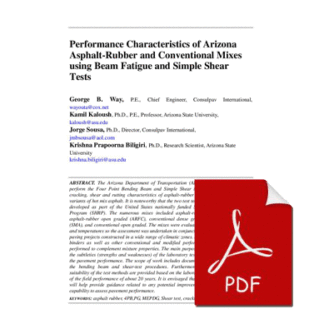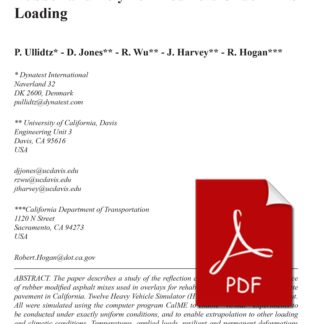Description
The paper describes a study of the reflection cracking and rutting performance of rubber modified asphalt mixes used in overlays for rehabilitating cracked asphalt concrete pavement in California. Twelve Heavy Vehicle Simulator (HVS) experiments were carried out. All were simulated using the computer program CalME to enable “virtual” experiments to be conducted under exactly uniform conditions, and to enable extrapolation to other loading
and climatic conditions. Temperatures, applied loads, resilient and permanent deformations measured and any surface cracking recorded during the HVS experiments, were imported into the CalME database. Experiments were simulated, hour by hour, using the incrementalrecursive procedure. Care was taken to ensure that the calculated resilient deflections matched the measured deflections reasonably well during the full experiment. The results shown in this paper are single examples of each mix type. However, the incremental-recursive method used in CalME and associated laboratory testing provide a means for evaluating the full life of the overlay with respect to reflective cracking, which better captures the crack resistance performance of rubber asphalt overlays than does the traditional approach using 50% loss of stiffness as failure and Miner’s Law.

